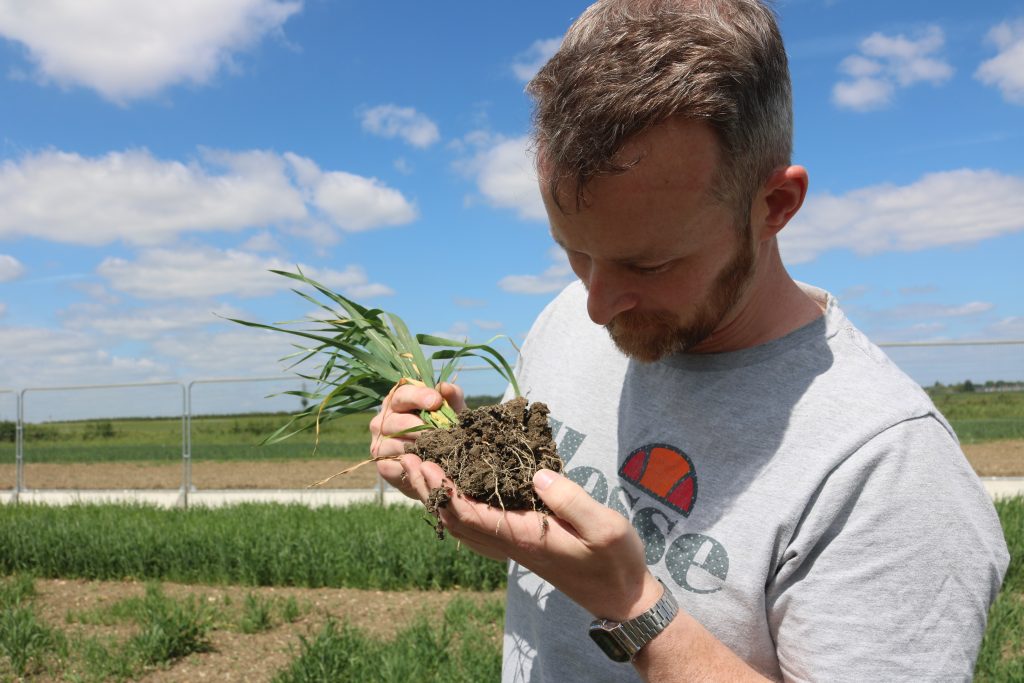Unearthing the secrets of the soil microbiome comes a step closer when farmers and research scientists work together, and the TRUTH Project has already revealed some intriguing results.
Dr Tom Thirkell’s area of expertise is mycorrhizal fungi – microscopic organisms that form symbiotic relationships with plant roots, facilitating nutrient exchange that is crucial for crop growth. His study within the TRUTH project aims to quantify the extent of these interactions, providing farmers with unique information about their soil’s microbiome.

The team of Root Rangers collect samples from their fields – digging up wheat roots, before washing and drying them, and then posting them to the laboratory in Cambridge. The research team then uses selective staining techniques to highlight the fungi within the roots, identifying structures such as hyphae, arbuscules and vesicles to indicate the level of nutrient exchange taking place.
“In a mutually-beneficial relationship, the plant supplies the fungi with carbon and receives essential nutrients like phosphorus and nitrogen in return,” explains Tom.
Mystery organisms
As well as healthy populations of mycorrhiza, Tom’s analysis of the Root Rangers’ samples has also uncovered some unidentified organisms.
“Selective staining works really well for the species of fungi that we work on, but every so often we find things we haven’t seen before.”
Some of these appear to be bacteria, while others are likely to belong to an ancient but newly- described group of fungi known as Mucoromycotina.
“We believe these can also form beneficial interactions with cereal crop roots, but there has been very little study of them compared to the arbuscular mycorrhizas.” They were found in several samples and are not unique to a specific type of farm, he explains.
“They are random how they crop up, but a strength of this project is that we can repeat these tests in years two and three and see if there are any patterns.” Tom also hopes that DNA sequencing of these samples may be possible in future, so that the ‘unknown fungi’ can be identified.
“Until then it’s our best guess what they might be.”
Tom’s findings from year one suggest that variations in fungal presence are influenced more by individual farms’ management practices, rather than the different treatments being trialled, but repetition of sampling in years two and three will develop this understanding further.
“There is a lot going on underground, but it can be uncovered through collaboration with farmers and other researchers through projects like TRUTH. It’s been well-documented that farm management impacts the microbiome. Moving forward, with an increased focus on sustainability and reduced chemical use, it is going to become more important.”
Microorganisms under the microscope
Hyphae: Fungal filaments which grow through the soil and
into plant roots that transport nutrients.
Arbuscules: Very small but highly branched structures within plant cells, that allow nutrient exchange.
Vesicles: Organs used by fungi for carbon storage to ensure a good supply, even when annual plant roots have died off